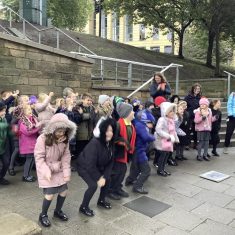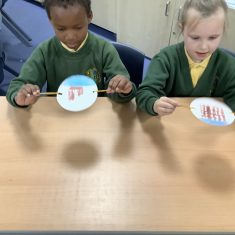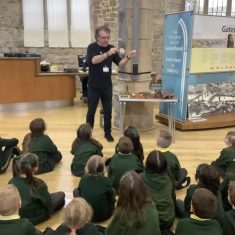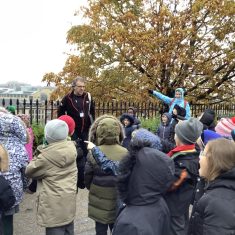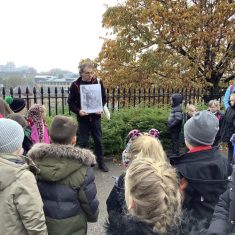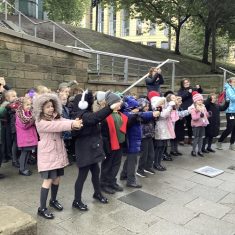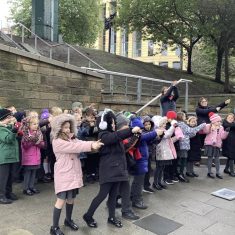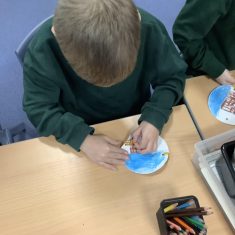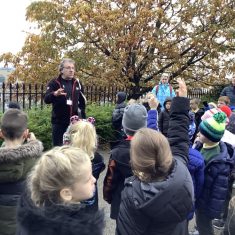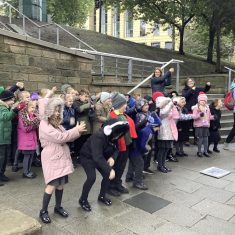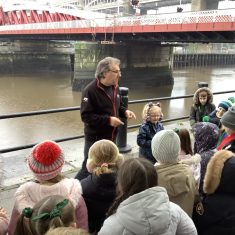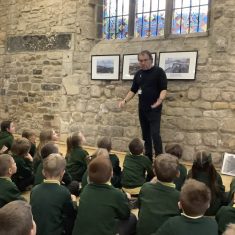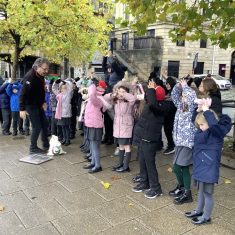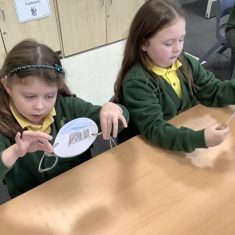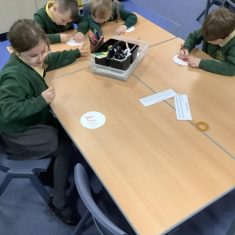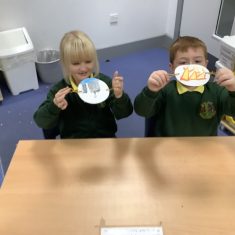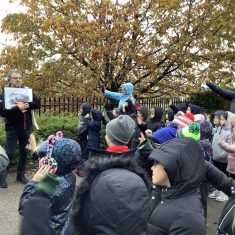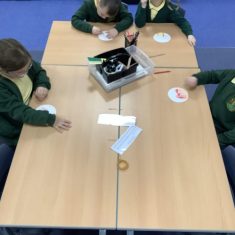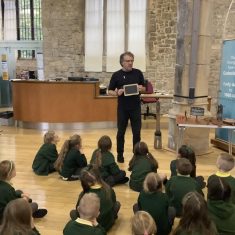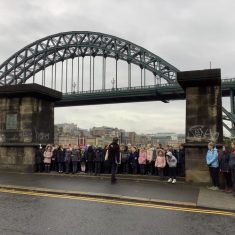Yesterday, Year Two visited St Mary’s Heritage Centre in Gateshead. This was linked to their History topic – The Great Fire of Gateshead. To begin, the children learned about the building they were visiting. Just from looking around, the children quickly identified that the building used be a church. It had arches, stained-glass windows and was built from stone. The children also recognised how old the building was from their observations. They learned that a group of people called the Normans built St Mary’s Heritage Centre over 850 years ago. Amazingly, the building has survived all this time, including the great fire of 1854.
Next, the children learned about what life was like on Gateshead Quayside in the 1800s. Looking at photographs and maps, the boys and girls could see that most people lived close to the river so they wouldn’t have to travel very far to get to work. Back then, there were no cars, buses or aeroplanes to take you where you wanted to go. Instead, people walked, rode horses or travelled by train.
The children then went on a walk to learn about what happened during The Great Fire of Gateshead. They were told the fire started in a wool factory, but soon spread to a warehouse full of sulphur. The boys are girls learned that sulphur is yellow but, when it burns, it has a blue flame. The sulphur, along with some explosive bird poo, is what caused a ginormous explosion. This explosion then resulted in the spread of the fire from Gateshead to Newcastle. The children walked across the Swing Bridge and thoroughly enjoyed jumping from Gateshead into Newcastle, or Monkchester, as it used to be called.
After that, the children learned how the fire was put out. Although fire tenders were called upon to help put out the fire, there were only three in the local area. The children learned that fire tenders came from all around the region to help but creating fire breaks was the solution to the problem. The children did a brilliant job demonstrating how knocking the houses down stopped from spreading further. Finally, the children found out how life changed after the fire. Surprisingly, people who had lost their homes were better off. New houses had more space, running water and even a separate toilet.
When the children returned to St Mary’s Heritage Centre, they were fortunate to see some household objects, including children’s toys, that would’ve been found in a Victorian house. The children loved exploring how the objects worked and even had the opportunity to create their own Victorian toy when they got back to school.




